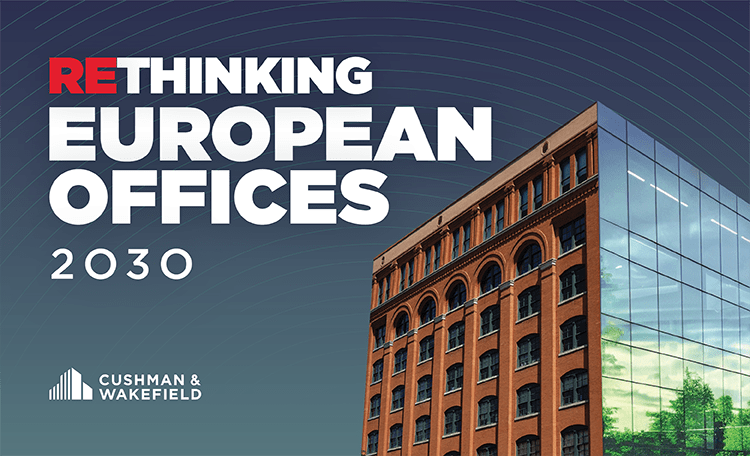Nothing is as it was just a hundred days ago. Donald Trump is shaking up the world. Including the global property markets. And thus also their European and German offshoots. The outcome of the movement is still open and forecasts should only be viewed with caution. ‘The only thing that is certain at the moment is the general uncertainty and the fact that the markets will continue to function in terms of supply and demand. Somehow. And somehow different, but still the same as always,’ says Tina Reuter, CEO Germany at Cushman & Wakefield.
The consequences for European property markets
The property sector in the EMEA region got off to a stable start in 2025. The start of the year was supported by steady demand from tenants and the first signs of an improvement in investment activity.
- Tariffs on materials such as steel and aluminium will cause construction costs to rise and restrict supply chains, at least temporarily. Existing properties are likely to benefit from this.
- Trade barriers will encourage companies to relocate production closer to home, which will increase long-term demand for national logistics property through onshoring and nearshoring strategies.
- The ECB and the Bank of England have started 2025 with a rather loose monetary policy. Expectations are that this will remain the case.
- In the short term, credit and risk premiums in Europe could rise due to economic uncertainties and market volatility. However, the fundamental factors remain supportive of a gradual recovery. As inflationary pressures ease and monetary policy loosens, confidence in the European credit and capital markets should pick up in the second half of 2025.
Are European bonds benefiting from the flight to safe havens?
- The financial markets initially reacted positively to Europe's fiscal policy change. Ten-year bond yields decoupled from those in the USA, a sign of rising investor confidence and expectations of a stronger performance in Europe in the short term.
- The recent move away from the US dollar could strengthen the euro and other European currencies. Investors are gradually adjusting their portfolios in response to changing interest rate differentials and shifting global risk sentiment.
- European government and corporate bonds serve as a good indicator of lending rates in the property sector. If volatility in the US drives investors into European bonds, CRE lending rates could move lower and create an opportunity for investors to secure comparatively attractive financing.
Shift in capital flows, return of European investors?
- The recent weakening of the US dollar against the euro could affect the relative attractiveness of euro-denominated assets for US investors. European assets have become more expensive in comparison. At the same time, this currency shift could have a dampening effect on US capital flows into European property.
- On the other hand, the changing global risk sentiment has triggered a flight to safe havens and liquidity, from which European government bonds have so far benefited.
- If demand shifts towards less liquid assets that are also perceived as safe, the European commercial property market (CRE) could benefit. Investors could increasingly look for diversification and lower-risk investment opportunities, which will continue to support capital inflows into European property - despite higher asset prices.
- Domestic investors may also find an opportunity to deploy capital as US investors recalibrate their global allocation strategies.
Tariffs weigh on companies
- Recent changes in customs policy are increasingly cited as a significant challenge for companies in Europe: They are re-evaluating their global supply chains and sourcing strategies.
- Survey data shows a short-term increase in demand for warehouse space due to higher inventory levels. However, this is likely to be temporary: Companies continue to prioritise lean supply chains. In contrast, supplier diversification offers a more sustainable change - particularly with benefits for European markets as nearshoring gains traction. Supported by stable EU trade regulations and possible government incentives, this trend could increase long-term demand.
- The impact on commercial real estate (CRE) is unclear. The uncertainty is likely to have a short-term impact on the willingness to lease new space. Restructuring supply chains is costly. However, the likelihood that companies will implement diversification strategies in their supply chains increases with a continued customs policy. This would potentially create new growth opportunities for Europe.
Tariffs drive the stagflation scenario in 2025 - recovery expected in 2026
- While the eurozone is likely to avoid a recession, growth has been revised downwards. While the direct impact of US tariffs on Eurozone growth is small, the combined indirect effects - such as tighter financial conditions and increased uncertainty - could significantly amplify the impact, with a one per cent tariff increase potentially lowering GDP by 14 basis points.
- The combination of tariffs - which could lead to rising prices - and monetary policy challenges significantly increases the risk of stagflation in the UK, and Europe could follow suit.
- Nevertheless, Europe enters 2025 with inflation largely under control and central banks may decide to focus more on growth conditions, which could lead to further rate cuts.
- A short-term stagflation scenario could weigh on the property markets in 2025. If growth slows more than inflation, central banks could respond with additional easing measures - potentially paving the way for a recovery in 2026.
Germany's change of direction
- Germany is loosening its fiscal policy after a phase of strict credit limits. The fiscal spending package includes: the exemption of defence spending above 1% of GDP from the debt brake; a €500bn infrastructure fund; the ability of federal states to run budget deficits of up to 0.35% of GDP; and access to 20% of the infrastructure fund.
- This fiscal package should boost the German economy, although the full benefits will only become apparent over time. Germany's shift towards a looser fiscal policy, coupled with significant infrastructure investment, will favour the real estate sector (CRE) through increased construction activity. With infrastructure improvements and the revitalisation of manufacturing, demand for logistics and industrial space will increase.
- In addition, the fiscal flexibility granted to the federal states could further promote regional development.
- Overall, the fiscal stimulus policy is creating a supportive environment for investment and development in the property sector.
Construction companies face higher costs
- Tariffs on key construction materials such as steel and aluminium are likely to put additional pressure on project budgets in the commercial real estate (CRE) sector.
- However, the impact will vary depending on the asset type, as not all sectors are equally affected by rising construction costs.
- Sectors such as logistics/industrial property and data centres, which have achieved higher yields and strong rental growth in recent years, may be better placed to absorb these cost increases. Their higher margin profiles offer more flexibility in dealing with rising input prices.
- In contrast, sectors such as office and retail property often operate with tighter financial margins, making them more susceptible to fluctuations in construction costs. As a result, these sectors may be more likely to experience delays in development or undertake a strategic realignment: Refurbishment of existing properties rather than new build projects.
Early signs of caution despite resilient start
- European investment volumes are starting to show early signs of market uncertainty. The figures for March 2025 show a decline of 11% compared to the same month last year. This decline indicates that a cautious mood may be developing among investors.
- Nevertheless, it should be noted that despite the slowdown in March, investment activity remained relatively robust overall in the first quarter. Volumes are 8% higher than in the same period last year, which indicates a solid start despite the recent downturn.
- The recent fluctuations in bond yields are likely to have an impact on property prices and the cost of capital. However, this trend could reverse quickly, depending on the duration of tariffs and ongoing uncertainty. Momentum was building at the beginning of the year and capital was ready to be invested.
Conclusions for occupiers and investors
‘Given the general uncertainty of the markets and their investors and users, it is now essential to continue to develop and implement strategies with a focus on long-term goals,’ says Tina Reuter.
In detail, Tina Reuter's recommendations for market participants with different focuses are as follows:
- ‘Use the current situation to your advantage when shaping business strategies and negotiations.
- Regardless of the impact of tariffs, it is essential for manufacturers to diversify their supply chains as part of sound risk management.
- Large companies are likely to gain market share. Position your business for growth by preparing for future opportunities.
- As high-quality options become increasingly scarce, the market will become more competitive.
- Adapt your property strategy to the business forecast. Analyse your organisation's risk profile and shape your strategy accordingly to optimise space utilisation.
- Prioritise long-term property investments, as a steady increase in value usually takes place over a longer period of time.
- Ignore short-term market fluctuations and strategically acquire assets from sellers that are driven by uncertainty.
- Take advantage of opportunities when long-term debt falls below historical averages and deploy capital in a targeted manner.
- Central banks are likely to continue to normalise interest rates, with further cuts as economic conditions deteriorate. Take advantage of these changes to optimise your investment strategy.
- Analyse your risk profile and implement an adapted strategy that is aligned with current market conditions.’





